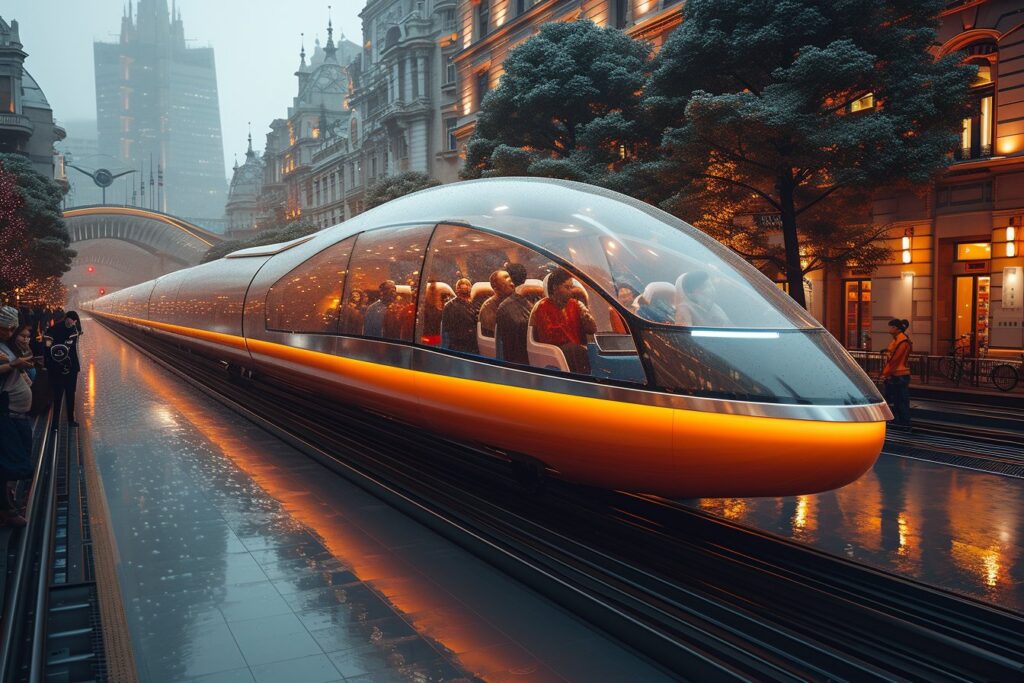Despite challenges, including infrastructure expenses and rider safety concerns, China continues to break speed records and push the boundaries of high-speed trains with its latest Hyperloop prototype. Developed by Chinese company Casic, this prototype employs magnetic levitation (maglev) technology to attain speeds comparable to airplanes. As authorities dismiss airports’ flight ban appeals for routes under 2 hours and 30 minutes, trains seem poised to become the alternative air travel solution.
Magnetic Levitation Technology Fuels the Hyperloop Speed Demon
The cutting-edge maglev technology uses electromagnets to both lift and propel the train forward, enabling it to reach incredible speeds. The electromagnet systems create repulsion forces, causing the train to be suspended above the tracks. This effectively reduces friction and delivers the phenomenal top speeds that set the Hyperloop apart from other forms of rail transport.
- During a recent test conducted by Casic, the Hyperloop prototype approached cruising speeds of airplanes, reaching over 623 km/h.
- The Hyperloop flies above the tracks, thanks to electromagnets that repel each other.
- Magnetic levitation further reduces friction, enabling incredibly high speeds.
Hyperloop Performance: Breaking Boundaries and Records
In the tests, Casic’s Hyperloop prototype not only exceeded expectations but also soared above previous speed records. The experts believe that the train is capable of delivering even higher velocities if pushed. However, there are limitations to hyper-acceleration and braking when operating at such extreme levels. Moreover, there is significant room for improvement in terms of passenger comfort and onboard amenities.
A Growing Market for High-Speed Trains in China
China’s high-speed rail network is one of the most extensive worldwide, and with an increasing focus on integrating advanced technology in public transportation, such as autonomous vehicles and alternative fuels, it is no wonder that investments are rising in this burgeoning industry. Specifically, Chinese authorities aim to prioritize and expand domestic rail systems, potentially replacing short-haul flights.
Relevant Legal Decisions and Regulations Impacting Development
A few days ago, the Council of State dismissed airport requests to cancel the decree banning flights when there is a train alternative available in less than 2 hours and 30 minutes. This decision reflects a growing interest in establishing high-speed trains, like Casic’s Hyperloop prototype, as practical alternatives to air travel, addressing concerns related to environmental impact, sustainability, and overall costs.
- The Council of State rejected airport appeals concerning flight bans for routes where trains can feasibly replace flights.
- This development could accelerate interest in and development of high-speed trains within China.
Addressing Challenges Associated with the Hyperloop Maglev Prototype
While the impressive speeds achieved by Casic’s Hyperloop maglev train are revolutionary, developing a fully operational network poses numerous challenges.
High Infrastructure Costs
Designing, building and maintaining rail infrastructure that can support these high-speed, magnetic levitation trains involve significant financial investments. To realize the full potential of the maglev Hyperloop, governments and private investors would need to collaborate, channel resources into research and development, and fund large-scale projects required to establish the necessary rail networks.
Passenger Safety Concerns
This extreme pace raises questions about passenger safety onboard such high-speed trains. While current tests have been successful in proving that these speeds are possible, the onus now falls on the authorities to ensure that appropriate safety measures are implemented and maintained during operation.
- Developing the Hyperloop maglev train involves overcoming several hurdles, including exorbitant infrastructure costs and ensuring passenger safety aboard such fast-moving vehicles.
The Future of High-Speed Rail Travel in China
In conclusion, China’s development of the magnetic levitation Hyperloop train is a groundbreaking achievement in rail transportation technology. However, there are still significant obstacles that must be addressed before it can become a realistic and effective alternative to air travel. Those challenges notwithstanding, China continues to lead the charge into a future dominated by high-speed trains, revolutionizing the landscape of public transportation for years to come.


